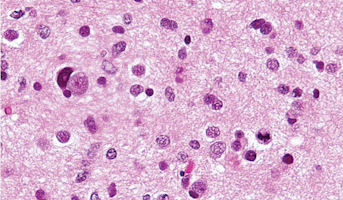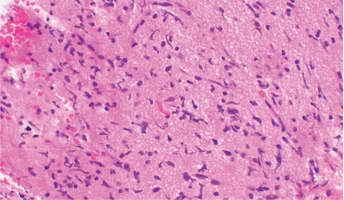
CBTN Data
CBTN Specimen
CBTN Participants
CBTN Samples
Backer
Northwestern University Clinical and Translational Sciences Institute (NUCATS)
The Ann & Robert H. Lurie Faculty Practice Plan
The Frankel Foundation
The Pediatric Cancer Research Foundation
About this
Project
Epigenetics is the collection of outside influences on genes that can affect their protein expression. Researchers hypothesize that tumor epigenetic signatures may serve as biomarkers of disease for diagnosis and may provide insight into tumor growth. The goal of this project is to determine patterns of tumor-specific protein expression in tumor tissue and cerebrospinal fluid (CSF) collected from children with glioma. Expression patterns of specific proteins known as histones will be correlated with patterns of gene expression to determine their usefulness as biomarkers of disease and response to therapy. This research has the potential to improve clinical outcomes for children with glioma by facilitating safer clinical diagnosis, informing effective therapeutic agents, and enabling monitoring of treatment response. All by using clinically accessible CSF specimens in lieu of tumor tissue. The Children's Brain Tumor Network contributed to this project by providing cerebral spinal fluid and tissue samples and by providing access to the Pediatric Brain Tumor Atlas. Matched CSF and tumor tissue specimens are required to conduct the proposed research. The CBTN contains this precious resource from children with low grade, high grade and diffuse intrinsic pontine glioma, with multiple collection events in some instances, making it’s contribution invaluable to this project.
Ask The
Scientists
What are the goals of this project?
Researchers will analyze tumor tissue and CSF from pediatric glioma patients in an effort to identify biomarkers that could be used for diagnostics and as treatment targets.
What is the impact of this project?
The proposed research could enable improved, faster and safer diagnostic measures, effective therapeutic agents, and accurate monitoring of treatment response in patients with pediatric gliomas.
Why is the CBTN request important to this project?
The Children’s Brain Tumor Network provides researchers with rare samples across many pediatric tumor types, contributing to the broad impact of this research.
Specimen Data
The Children's Brain Tumor Network contributed to this project by providing cerebral spinal fluid and tissue samples and by providing access to the Pediatric Brain Tumor Atlas.
related
Histologies

High-Grade Glioma
High-grade Gliomas (HGG) or astrocytomas in children nearly always result in a dismal prognosis. Although novel therapeutic approaches are currently in development, preclinical testing has been limited, due to a lack of pediatric-specific HGG preclinical models. These models are needed to help test

Diffuse Intrinsic Pontine Glioma
A presumptive diagnosis of DIPG based on classic imaging features, in the absence of a histologic diagnosis, has been routinely employed. Increasingly however, histologic confirmation is obtained for both entry into research studies and molecular characterization of the tumor.[5] New approaches with